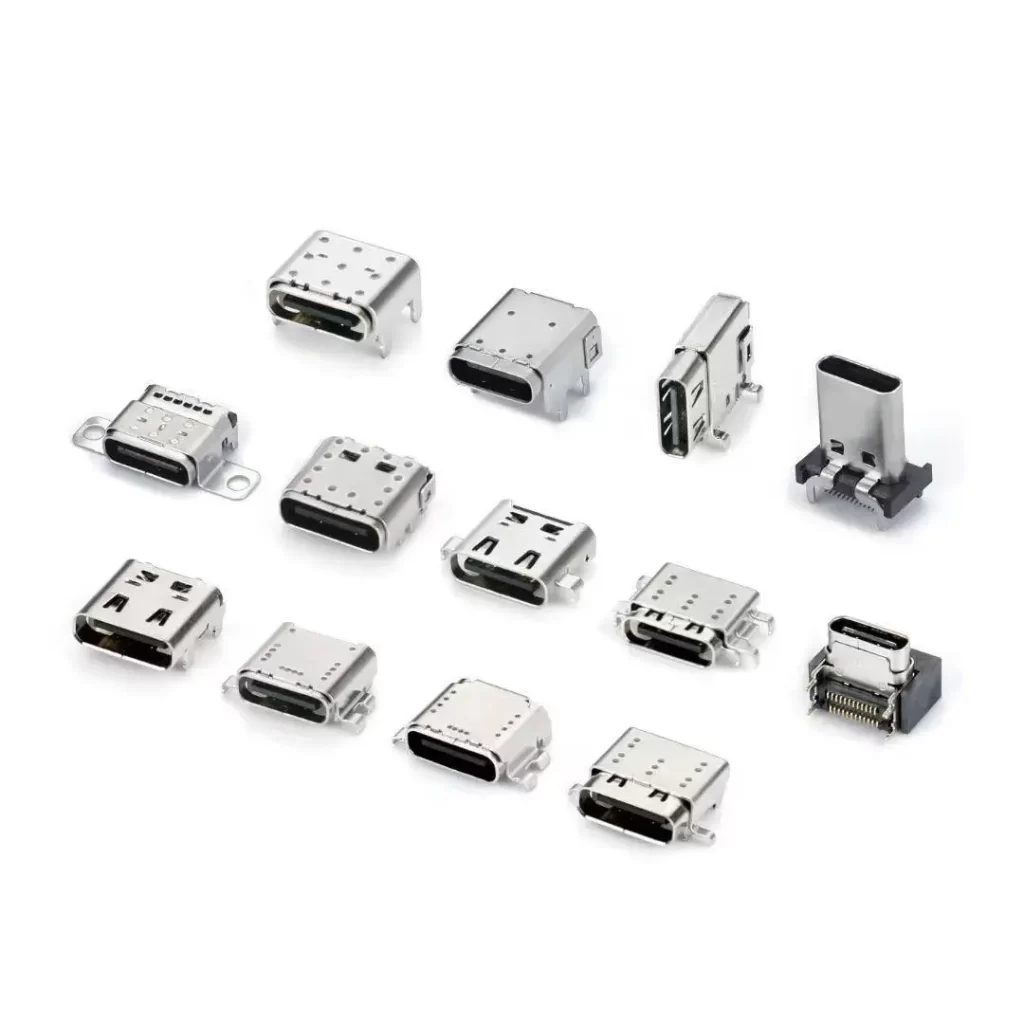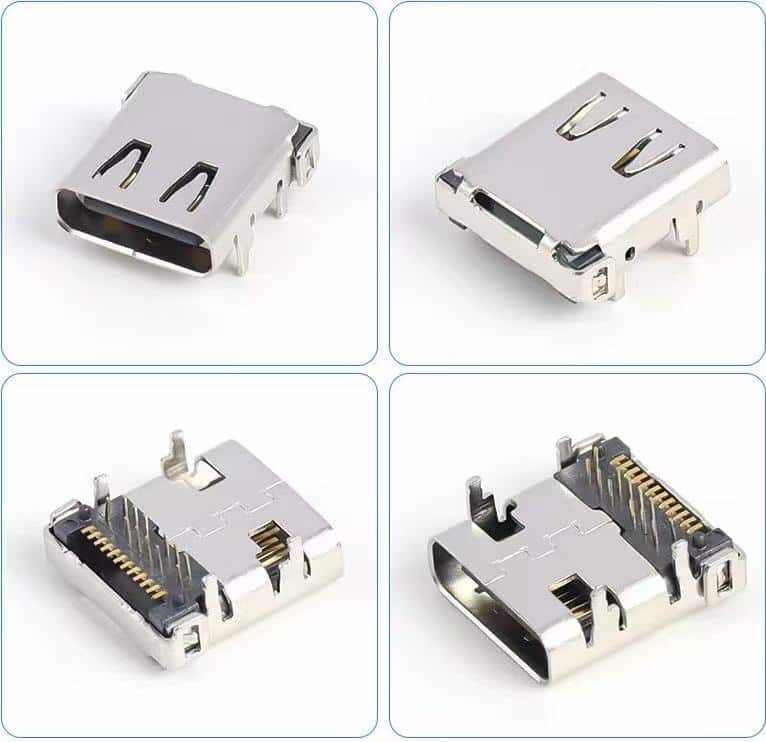The USB Type C 24 Pin connector, as a widely used connection standard in modern electronic devices, holding significance for both users and developers . With the popularity of the USB Type C interface, the 24p vision has gradually become the mainstream choice due to its higher power management capability higher data transfer speed rates, and the convenience of reversible insertion. This article will discuss structure, technology feature to provide readers with a comprehensive understanding of this technology.

USB Type C 24 Pin Connector Interface Pinout Design
The core of USB Type C 24 pin interface lies in its precise pinout design. Compared to traditional USB interfaces, the Type C 24 pinout employs a symmetrical design that supports reversible insertion, significantly improving thee user experience. Its 24 pins serve distinct functions, including data transmission, power supply, and audio output.
Specifically, these pins can be categorized as follows: First are the differential signal pairs used for high-speed data transfer, supporting USB 3.1 and above protocols, with theoretical transfer rates reaching up to 10Gbps or even even higher. Second are the power pins, supporting power delivery up to 100W, capable of charging high power devices like laptops. Additionally, there are dedicated pins for audio output, supporting analog audio signal transmission and compatibility with traditional headphone equipment.
Technical Features of USB Type C 24 Pin Connector
In the dimension of power delivery, the USB Type C 24 pin connector supports USB Power Delivery (USB PD) technology, enabling offer power delivery up to 100W. This feature allows the USB Type C 24 pin connector to charge not only small devices like smartphones and tablets, but also to provide power for high-power devices such as laptops. This high-efficiency delivery capability significantly simplifies the variety of chargers. Users can meet the charging needs of multiple devices with just a single USB Type C 24 pin connector, greatly enhancing convenience.
In the way of data transfer, The Type C 24 pin connector interface supports multiple high-speed protocols. It supports the USB 3.1 and USB 4 standards, achieving maximum data transfer rates of up to 40Gbps, and also supports dual 4K video output and PCIe expansion. This makes the Type C 24 pin interface be an ideal choice for connecting external GPU docks, high-speed storage devices, and high-resolution displays.
The design philosophy of the USB Type C 24 pin connector is centered on user-friendliness. Compared to traditional USB connectors, the USB Type C 24 pin connector features a reversible orientation. This design reduces the risk of damage of caused by incorrect risk of damage caused by incorrect insertion and improves the user experience. Additionally, the relatively smaller size of the USB Type C 24 pin connector makes it better suited for slim devices and portable electronics.
Versatility and High Compatibility
The versatility of USB Type-C 24 pin connector is one of its most notable features. It not only supports data transfer and power delivery but can also transmit video output through integrated protocols.
The technical advantages of USB Type C 24 pin interface are also reflected in its high compatibility. By adopting a unified physical interface standard, the Type C 24 pin connector is compatible with multiple protocols, including USB, DisplayPort, Thunderbolt, and others. This means users can achieve various functions—such as data transfer, video output, and charging—through a single Type-C interface, reducing the number of ports on devices and simplifying design.
The application in the audio domain
The application of USB Type C 24 pin interface in the audio domain is also noteworthy. The traditional 3.5mm headphone jack is gradually being replaced by the Type C interface, especially in the smartphone sector. Through its dedicated audio pins, the Type C 24 pin interface can transmit high-quality analog audio signals and also supports digital audio output, compatible with the USB Audio Class protocol. This allows users to connect high-quality DACs (Digital-to-Analog Converters) and headphones via the Type-C port for an improved audio experience. Furthermore, the widespread adoption of the Type-C interface has spurred the development of wireless audio technology. Many manufacturers have begun launching wireless headphones and speakers supporting the Type-C interface, further enriching users’ audio options.

In summary, 24 pin USB Type C connector, with its technical characteristics such as high power supply, ultra-high speed transmission, reversible orientation, multifunctionality, superior compatibility and gradual application in the field of audio, is becoming an indispensable part of modern electronic devices. As technology continues to advance and applications expand, the USB Type C 24 pin connector will undoubtedly play an even more crucial role in future electronic product design, offering users a more convenient and efficient experience.
Looking ahead, 24 pin USB Type C connector will continue to evolve, supporting higher data transfer rates and more powerful features. Additionally, with the development of 5G, artificial intelligence, and IoT technologies, the Type-C 24-pin interface will play a significant role in more fields, becoming one of the core interfaces connecting smart devices.
